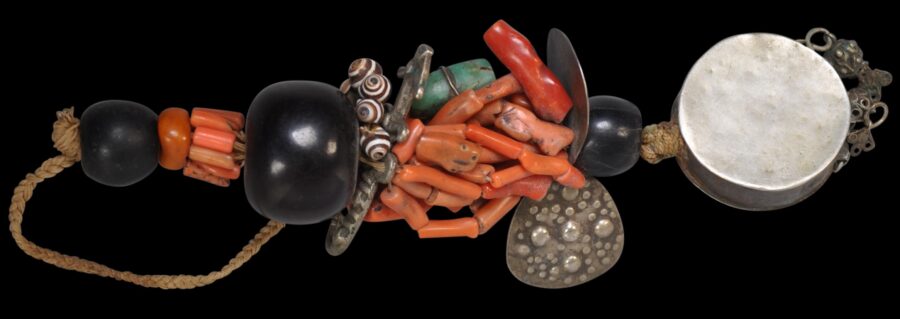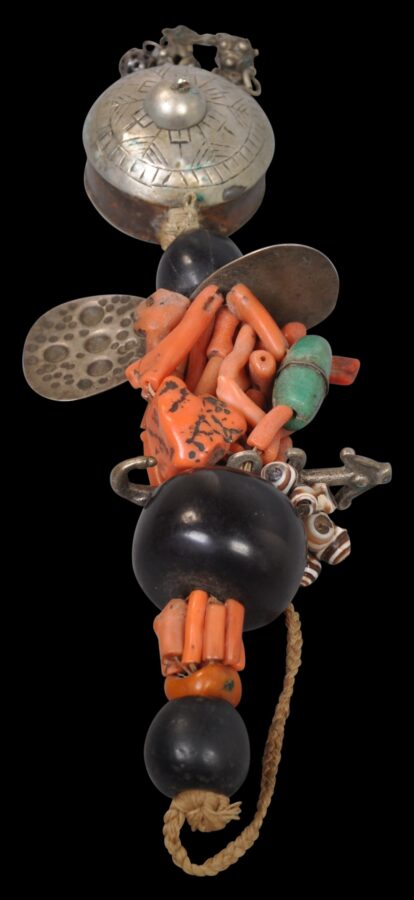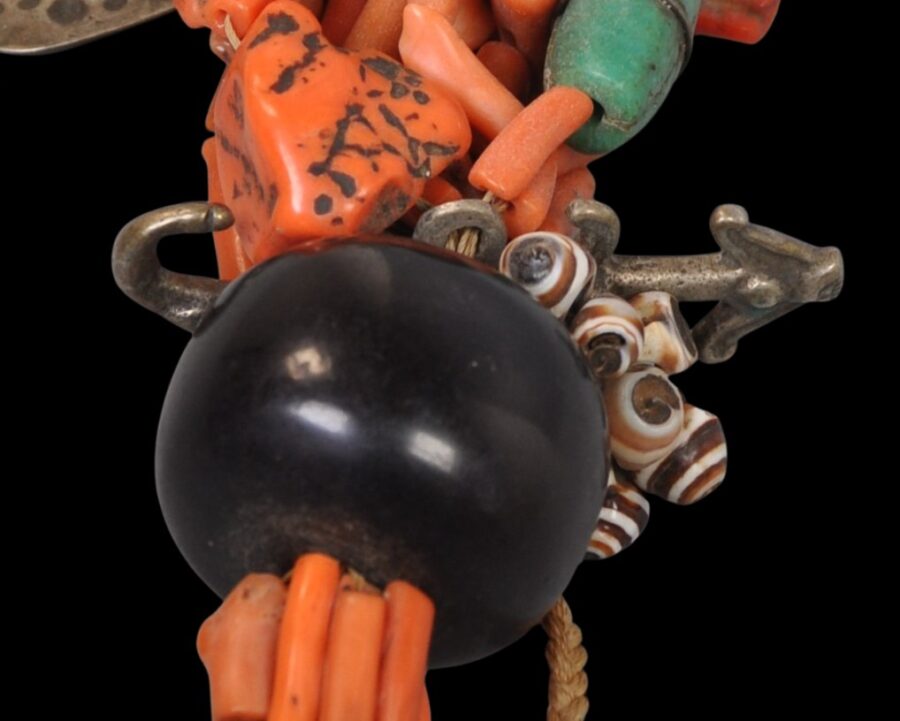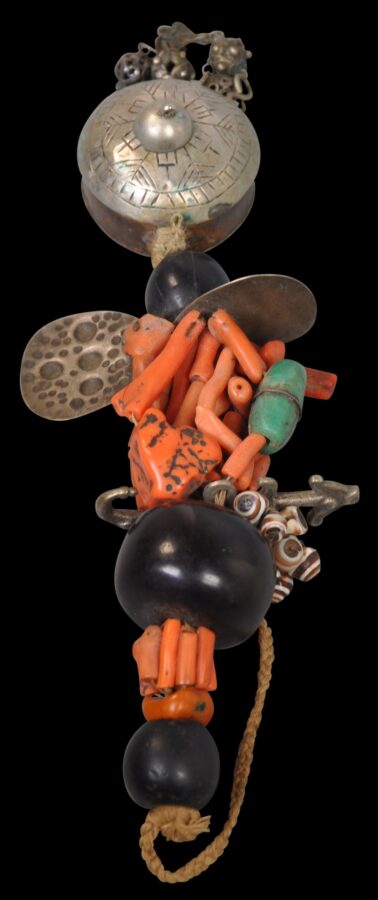Enquiry about object: 9687
Rare Moroccan Berber (Amazigh) Hair Braid Finial (Tidjgagalin)
Amazigh or Berber People, Ktaoua, Draa Valley, Southern Morocco latest stringing: mid-20th century from earlier elements
overall length: 42cm, length with the decoration elements: approximately 23cm, diameter of the largest bead: 3.3cm, weight: 145g
Provenance
private collection, Germany; acquired in the 1980s
This elaborate finial was worn by a Berber or Amazigh woman on the end of her hair plait or braid, down her back. This particular version is very particular to the village of Ktaoua in the Draa Valley.
It comprises red Mediterranean coral, amber, green amazonite, small striped sea snail shells, a propeller-like metal twist with two opposing tear-shaped discs, a small model of a Moroccan jambiya dagger (koummiya), two round black glass trade beads, and terminating with a rounded white metal box with four dangles. The green amazonite bead has an old wire repair – repairs such as these are much prized by collectors in that they demonstrate the age and authenticity of the piece but also the value attached to such items by their original owners.
A similar round box as on the terminal here is illustrated on a related necklace illustrated in Liu (1995, p. 130).
These silver elements are typical of a very small region in the Draa Valley – in and around the village of Ktaoua – that favoured these. The top bead is a large black spherical bead known locally in Morocco as a tak tak bead. These were highly prized and have become so sought after in Morocco that they are now sold on a per gram basis rather than by bead. They are likely to be Dutch and possibly French glass trade beads dating to the 17th century.
One of the larger amber beads has a twisted silver wire around it to keep it intact. Old, native repairs such as have tended to make the amber even more desirable as its underscores its age, authenticity and value to the women who owned it.
The finial elements are flecked with remnants of scented paste which traditionally was applied to jewellery worn by women. It was applied not only for its scent but also for spiritual and aphrodisiac purposes. Pastes were ordered from specialist mixers and the recipes varied from retailer and also by purpose, but a typical recipe for such a scented paste might include rose petal powder, jatamansi (also known as spikenard or nard) powder, agarwood powder, mahlab powder, ground cloves, ground amber perfume block, gum Arabic powder, rosewater, ambergris tincture, geranium oil, rose essential oil, and neroli essential oil.
The hair braid finial retains its original stringing and is in its original condition. It has not been amended later by dealers in Morocco (for example) to make it more appealing. It is in its original, authentic state and has not been amended other than by the original owner. Probably it was last restrung around 1950 with more elements being added to many (much) earlier elements by its traditional owner. And as mentioned, it is larger and more laden than most extant examples, suggesting the wealth of its original owner.
Related examples are illustrated in Hoek (2004, p. 29) and Morin-Barde (1990, p. 123). The Morin-Barde example is presented as a line drawing and it is almost identical to the example here and includes certain key elements such as the opposing tear-shaped metal disks and the metal arrow. These precise elements suggest that the Morin-Barde example and the example here are from the same village in the Draa Valley.
The example here is excellent, authentic and complete. It includes many rare and valuable elements, and as mentioned retains its original stringing and is without any modern additions.
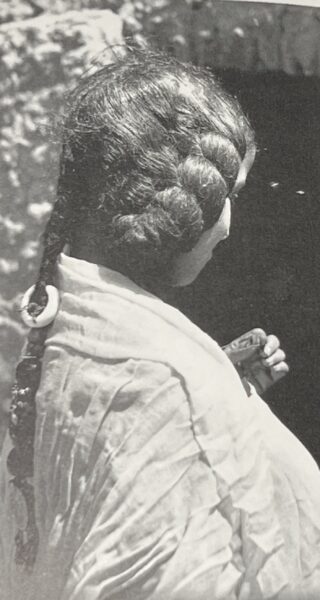
Above: a Ktaoua village woman, circa 1960, wearing a tidjgagalin finial at the end of her plait down her back.
References
Draguet, M., Berber Memories: Women and Jewellery in Morocco, Mercatorfonds, 2020.
Hoek, C., et al, Ethnic Jewellery: From Africa, Asia and Pacific Islands, Pepin Press, 2004.
Liu, R.K., A Universal Aesthetic: Collectible Beads, Ornament, Inc, 1995.
Morin-Barde, M., Coiffures Feminines du Maroc, Edisund, 1990.



